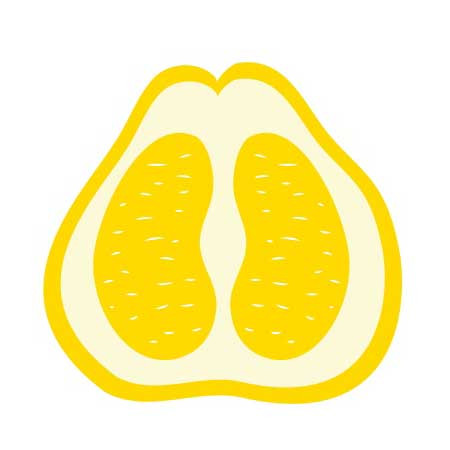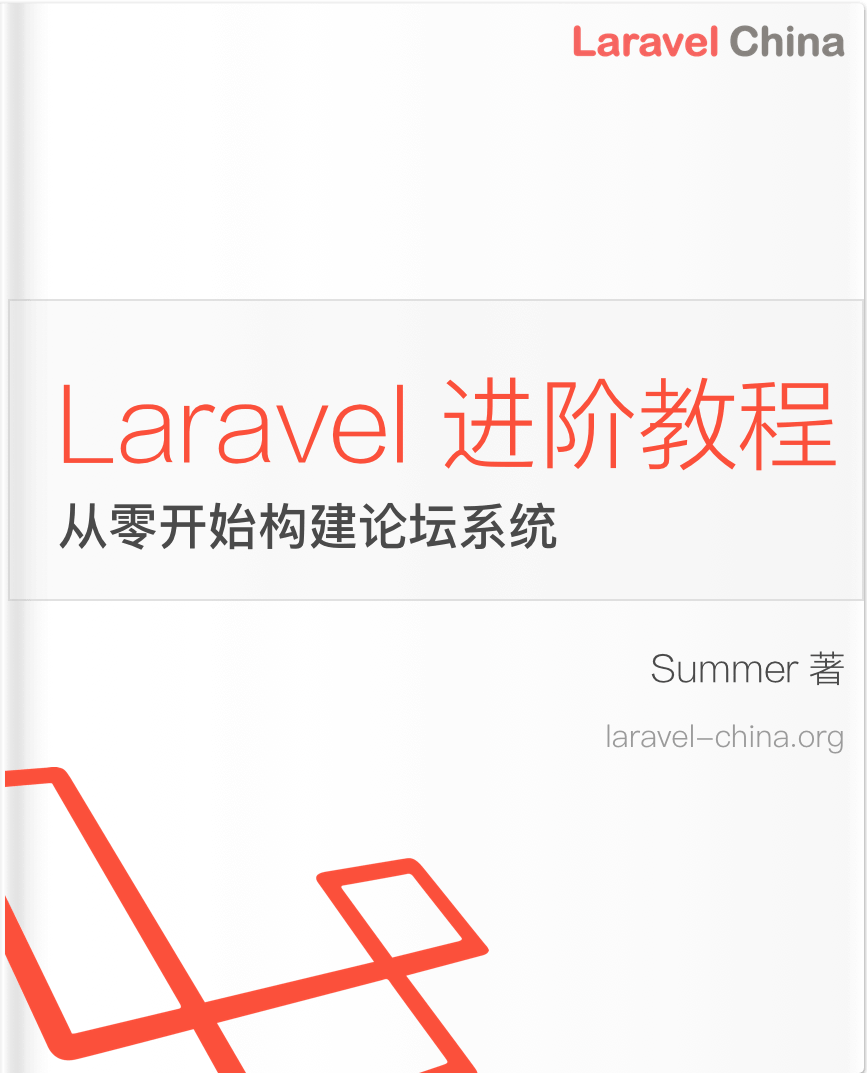Laravel 5.4 生命流程与源码分析
Laravel5.4 生命流程与源码分析
明白流程不代表精通Laravel。因为还需要把这个流程与实际开发需要融汇贯通:学以致用。比如,如何修改Laravel日志存放目录?Laravel并没有自定义日志目录的配置,需要修改源代码,这就需要了解Laravel的生命流程,明白Laravel是在哪里,什么时候进行日志目录设置。
一、 整体流程
绑定的异常处理:App\Exceptions\Handler::class 可以在这里自定义
二、 Application初始化流程
2.1 App初始化解释
由此看来,Applicantion的初始化并没有很复杂
- 初始化容器
- Events/Log/Router注册基础服务
- 设置容器中abstract与alias的映射关系
Events :单例绑定 events => Illuminate\Events\Dispatcher
- 并且设置了`setQueueResolver` Resolver 一般是一个callable类型,用于向容器获取某个对象。比如这里的是一个队列Log : 单例绑定 log => \Illuminate\Log\Writer
public function createLogger()
{
$log =
// \Monolog\Logger
new Monolog($this->channel()),
// \Illuminate\Contracts\Events\Dispatcher 上面Events的绑定
$this->app['events']
if ($this->app->hasMonologConfigurator()) {
call_user_func($this->app->getMonologConfigurator(), $log->getMonolog());
} else {
// 默认会走这里
$this->configureHandler($log);
}
return $log;
}
// channel 只是得到当前的环境
protected function channel()
{
return $this->app->bound('env') ? $this->app->environment() : 'production';
}默认会走configureHandler方法:
protected function configureHandler(Writer $log)
{
$this->{'configure'.ucfirst($this->handler()).'Handler'}($log);
}
// 从配置中得到 是single/daily/Syslog/Errorlog
protected function handler()
{
if ($this->app->bound('config')) {
return $this->app->make('config')->get('app.log', 'single');
}
return 'single';
}
// single 调用: $log->useFiles
// daily 调用:$log->useDailyFiles
// Syslog 调用:$log->useSyslog
// Errorlog 调用:$log->useErrorLog这里是要从配置上获取啊,关键是现在还没有加载配置!!这是什么情况?
$this->app->singleton('log', function () {
return $this->createLogger();
});虽然是绑定,但只是绑定一个Resolver ,一个闭包,并不是马上实例化Logger的。所以在加载配置前,将会使用默认值形式记录日志的。
意思是设置monolog 该把日志写在哪里,怎么写,比如 daily。
protected function configureDailyHandler(Writer $log)
{
$log->useDailyFiles(
// 固定storage目录和文件名 可以在这修改
$this->app->storagePath().'/logs/laravel.log', $this->maxFiles(),
$this->logLevel()
);
}如果想要自定义处理,则:
// 设置一个回调即可
$app->configureMonologUsing('myLogCallback');
function myLogCallback($log)
{
$log->useDailyFiles(
'/tmp/logs/laravel.log',
5, // 最多几个日志文件,可以写成配置
'debug' // 日志等级,可以写成配置
);
}
//关键是在哪里调用这个设置比较好?如果只是修改日志路径,我建议修改对应handler的路径即可,比如修改configureDailyHandler的路径修改一下。甚至可以在服务提供者下添加一个自定义的handler。我认为Laravel应该把这个Log服务提供者做成Kernel这样的继承。
比如:
App 的 registerBaseServiceProviders 中:
$this->register(new \Illuminate\Log\LogServiceProvider($this));改成:
$this->register(new \App\Providers\LogServiceProvider($this));然后再app/Providers目录下新增一个LogServiceProvider extens \Illuminate\Log\LogServiceProvider。 这样我们就可以重写或者添加日志的configuredHandler日志配置handler了.
Illuminate\Routing\RoutingServiceProvider 的注册 register
/**
* Register the service provider.
*
* @return void
*/
public function register()
{
/*
绑定 :router => Illuminate\Routing\Router
Router 定义了 get post put
*/
$this->registerRouter();
/*
绑定: url => Illuminate\Routing\UrlGenerator
绑定: routes => \Illuminate\Routing\RouteCollection
回调: session :setSessionResolver
回调: 上述绑定的 rebind
*/
$this->registerUrlGenerator();
/*
绑定:redirect => Illuminate\Routing\Redirector
*/
$this->registerRedirector();
$this->registerPsrRequest();
$this->registerPsrResponse();
$this->registerResponseFactory();
}暂时可以把Kernel看作一个黑匣子:把请求往里放,响应返回出来。
registerRouter 注册了 Router路由
Facade 中的Route实际上调用的就是 Illuminate\Routing\Router 实例的方法。Router还有魔术方法__call 类似
as,domain,middleware,name,namespace,prefix这些Router没有的方法,会从新创建一个新的Illuminate\Routin\RouteRegistrar实例调用其attribute方法 (Registrar是登记的意思)
这些都回在RouteServiceProvider 上调用:
/**
* Define the "web" routes for the application.
*
* These routes all receive session state, CSRF protection, etc.
*
* @return void
*/
protected function mapWebRoutes()
{
Route::middleware('web') // 这里就创建了RouteRegistrar 并且返回自身
->namespace($this->namespace)
->group(base_path('routes/web.php'));
}最终 RouteRegistrar 还是对router对象进行操作。
疑问:为什么不直接操作router,而走这么复杂的路?
主要是给RouteServiceProvider 的mapWebRoutes 和 mapApiRoutes 方法使用。作用是区分并且保存 路由设置的属性。因为每次调用都会重新创建一个RouteRegistrar实例,因此 其attributes都是不共享的,起到Web与Api理由设置的属性不会相互影响。
要注意:服务提供者注册的时候没有进行依赖注入,也不需要使用依赖注入;因为实例化的时候就把app作为参数传递进去,如果需要直接使用app获取依赖的对象即可
三、Http Kernal 的流程
看代码:
$kernel = $app->make(Illuminate\Contracts\Http\Kernel::class);
$response = $kernel->handle(
$request = Illuminate\Http\Request::capture()
);
$response->send();
$kernel->terminate($request, $response);上面看,Kernel大体做了4件事:
- 初始化Kernel
- 捕捉请求与handle请求
- 发送请求
- terminate
3.1 Kernel初始化
public function __construct(Application $app, Router $router)
{
$this->app = $app;
$this->router = $router;
// 设置中间件优先级列表
$router->middlewarePriority = $this->middlewarePriority;
// 中间件组 web 和 api 的中间件组
foreach ($this->middlewareGroups as $key => $middleware) {
$router->middlewareGroup($key, $middleware);
}
// 路由中间件
foreach ($this->routeMiddleware as $key => $middleware) {
$router->aliasMiddleware($key, $middleware);
}
}Kernel初始化做了3件事,总体是一件事(设置中间件):
- 给路由设置中间件固定优先级列表
- 设置中间件分组(Web与Api的分组)
- 设置路由中间件(在路由中设置的中间件)
后两步的中间件属性都是空的,具体的值在App\Http\Kernel中
在设置路由中间件中aliasMiddleware 顾名思义,就是给中间件设置一个别名而已。
3.2 Kernel处理请求
捕获请求后面再说
这里是核心部分了:路由调度,中间件栈(闭包),自定义异常处理。在此之前都没有进行过一次的依赖注入。因为还没有在容器当中。
public function handle($request)
{
try {
$request->enableHttpMethodParameterOverride();
// 把请求通过以下路由,就变成了响应
$response = $this->sendRequestThroughRouter($request);
} catch (Exception $e) {
$this->reportException($e);
$response = $this->renderException($request, $e);
} catch (Throwable $e) {
$this->reportException($e = new FatalThrowableError($e));
$response = $this->renderException($request, $e);
}
event(new Events\RequestHandled($request, $response));
return $response;
}注意:Throwable能够捕捉 Exception 和 Error。这是php7 的特征。
enableHttpMethodParameterOverride 做什么?方法欺骗!
/**
* Enables support for the _method request parameter to determine the intended HTTP method.
*
* Be warned that enabling this feature might lead to CSRF issues in your code.
* Check that you are using CSRF tokens when required.
* If the HTTP method parameter override is enabled, an html-form with method "POST" can be altered
* and used to send a "PUT" or "DELETE" request via the _method request parameter.
* If these methods are not protected against CSRF, this presents a possible vulnerability.
*
* The HTTP method can only be overridden when the real HTTP method is POST.
*/
public static function enableHttpMethodParameterOverride()
{
self::$httpMethodParameterOverride = true;
}主要看注释。大概意思:
为了能够通过_method参数进行方法欺骗.被警告,启用这个特性可能会导致你的代码中的CSRF问题。检查您是否在需要时使用CSRF令牌。如果启用HTTP方法参数覆盖,则可以更改具有方法“POST”的html表单,并通过_method请求参数发送“PUT”或“DELETE”请求。如果这些方法不受CSRF保护,就会出现一个可能的漏洞。方法前片只有在真正的HTTP方法是POST的时候才会被修改
sendRequestThroughRouter做的几件事
- 绑定request
- 启动App容器(重要)
- 加载.env环境配置
- 加载config目录配置
- 设置错误和异常的handler
- 设置Facade别名自动加载
- 注册服务提供者
- 启动服务提供者 (这个时候才开始可以使用依赖注入)
- 把请求通过中间件和路由
- 使用管道(闭包栈)
- 路由调度
protected function sendRequestThroughRouter($request)
{
// 通过路由的时候才绑定请求到容器中
$this->app->instance('request', $request);
// 清除Facade的$resolvedInstance属性保存的对象。
// 当使用Facade的时候如果不存在则从app容器获取对象
Facade::clearResolvedInstance('request');
// 启动App 其实是调用一些类
$this->bootstrap();
return (new Pipeline($this->app))
->send($request)
->through($this->app->shouldSkipMiddleware() ? [] : $this->middleware)
->then($this->dispatchToRouter());
}启动App 其实是调用一些类
App 下的
public function bootstrapWith(array $bootstrappers)
{
// 修改为已经启动
$this->hasBeenBootstrapped = true;
// 启动类 触发事件
foreach ($bootstrappers as $bootstrapper) {
$this['events']->fire('bootstrapping: '.$bootstrapper, [$this]);
// 调用这些类的bootstrap方法
$this->make($bootstrapper)->bootstrap($this);
$this['events']->fire('bootstrapped: '.$bootstrapper, [$this]);
}
}看一下App启动流程有哪些?
protected $bootstrappers = [
// 加载 .env环境变量
\Illuminate\Foundation\Bootstrap\LoadEnvironmentVariables::class,
// 加载config目录的配置
\Illuminate\Foundation\Bootstrap\LoadConfiguration::class,
\Illuminate\Foundation\Bootstrap\HandleExceptions::class,
\Illuminate\Foundation\Bootstrap\RegisterFacades::class,
// 注册配置的服务提供者
\Illuminate\Foundation\Bootstrap\RegisterProviders::class,
// 启动服务提供者 即调用 boot方法
\Illuminate\Foundation\Bootstrap\BootProviders::class,
];注意:环境配置与config配置的加载之前已经说过了,这里就不说了:
这里简单总结一下上面两个链接:
- 不能在config目录外使用env辅助函数
- 不能在config目录内定义配置以外的内容,比如定义类
为什么有这样的要求?因为如果使用 php artisan config:cache 把配置缓存后,env函数将不再去加载.env文件,config函数也不会加载config目录(目录中的类也就不能加载了)
异常错误handler
Illuminate\Foundation\Bootstrap\HandleExceptions的bootstrap方法:
public function bootstrap(Application $app)
{
$this->app = $app;
// 设置报所有的错 -1 的补码全都是1
error_reporting(-1);
// 设置系统错误地handler:warning notice等
set_error_handler([$this, 'handleError']);
// 设置异常处理
set_exception_handler([$this, 'handleException']);
// 设置php结束时的处理函数
register_shutdown_function([$this, 'handleShutdown']);
if (! $app->environment('testing')) {
ini_set('display_errors', 'Off');
}
}其实就是设置一些错误和异常处理回调,最终的handler是之前说的App\Exceptions\Handler::class类。
我们看看:
public function handleError($level, $message, $file = '', $line = 0, $context = [])
{
if (error_reporting() & $level) {
throw new ErrorException($message, 0, $level, $file, $line);
}
}只是把一些可以捕获的PHP Error转为Exception,然后再由ExceptionHandler处理。
public function handleException($e)
{
if (! $e instanceof Exception) {
$e = new FatalThrowableError($e);
}
// 报告错误,比如写入错误日志
$this->getExceptionHandler()->report($e);
// 根据不同的运行环境输出不一样的错误形式
if ($this->app->runningInConsole()) {
$this->renderForConsole($e);
} else {
$this->renderHttpResponse($e);
}
}好了,看到这里大家明白了自定义异常处理是在:`App\Exceptions\Handler::class 处理的.
Facade的注册:
这个是需要在app.aliases上进行配置的。
调用了一个AliasLoader类:顾名思义,就是一个类别名自动加载者;就是为这些Facade设置自动加载。
/**
* AliasLoader类
* Prepend the load method to the auto-loader stack.
*
* @return void
*/
protected function prependToLoaderStack()
{
spl_autoload_register([$this, 'load'], true, true);
}bool spl_autoload_register ([ callable $autoload_function [, bool $throw = true [, bool $prepend = false ]]] )Facade性能: Laravel把Facade的加载放在最前面。因此使用Facade是可以提高自动加载速度的。但是如果在app.aliases加了一个不是Facade的一个别名,这将会降低性能(因为会去写文件,创建一个Facade)
看看Facade是怎么加载的:
public function load($alias)
{
// 如果没有Facade的命名空间,说明不是Facade
if (static::$facadeNamespace && strpos($alias, static::$facadeNamespace) === 0) {
// 使用Facade的模板自动创建一个与别名一样的Facade,并且加载它:ensureFacadeExists
$this->loadFacade($alias);
// 返回 true 告诉PHP不用再去加载,已经加载了
return true;
}
// 有Facade这个命名空间: Facades\\
if (isset($this->aliases[$alias])) {
// 设置别名,并且自动加载
return class_alias($this->aliases[$alias], $alias);
}
}
// PHP class_alias原生函数
bool class_alias ( string $original , string $alias [, bool $autoload = TRUE ] )register服务提供者
public function registerConfiguredProviders()
{
(new ProviderRepository($this, new Filesystem, $this->getCachedServicesPath()))
->load($this->config['app.providers']);
}服务提供者的缓载介绍:服务提供者缓载
这里简单说:
- 首先使用
$this->getCachedServicesPath()得到服务提供者缓存起来的文件 - 是否有缓存或者配置是否变化(变化就更新)
- 使用配置的进行判断哪些是缓载(需要时才加载)
主要看Illuminate\Foundation\ProviderRepository的load方法:
public function load(array $providers)
{
// 加载缓存的services.php
$manifest = $this->loadManifest();
// 是否需要从新生成缓存文件
if ($this->shouldRecompile($manifest, $providers)) {
$manifest = $this->compileManifest($providers);
}
// 对于 when形式的服务提供者 在某事件触发才注册
foreach ($manifest['when'] as $provider => $events) {
$this->registerLoadEvents($provider, $events);
}
// 这些是马上就注册的
foreach ($manifest['eager'] as $provider) {
$this->app->register($provider);
}
// 这个是缓载的。只是添加到App的deferredServices属性
$this->app->addDeferredServices($manifest['deferred']);
}
// 添加事件监听
protected function registerLoadEvents($provider, array $events)
{
if (count($events) < 1) {
return;
}
$this->app->make('events')->listen($events, function () use ($provider) {
$this->app->register($provider);
});
}boot 启动服务提供者
这个时候会使用App 的 call方法来调用所有注册的服务提供者。为什么使用
call方法,而不是直接调用?因为使用依赖注入。要知道这个call方法是public的,我们可以在其他地方也可以显示使用
依赖注入
/**
* Call the given Closure / class@method and inject its dependencies.
*
* @param callable|string $callback
* @param array $parameters
* @param string|null $defaultMethod
* @return mixed
*/
public function call($callback, array $parameters = [], $defaultMethod = null)
{
return BoundMethod::call($this, $callback, $parameters, $defaultMethod);
}Illuminate\Container\BoundMethod就是依赖注入实现的类了(需要传递App容器进去才行)
依赖注入流程
从
Illuminate\Container\BoundMethod的call方法开始graph TD A[A BoundMethod::call] --> B B{B callback 是字符串型} -->|Yes|C B --> |No|E C[C 转为 array 型callable] --> E E[E callBoundMethod] --> F F{F callback 是 array 型} --> |No|G F --> |Yes|H G[G 直接调用default并且返回] --> Z H{H callback 是 app的bindingMethod} --> |Yes|I I[I 直接调用app的bindingethod] --> Z H --> |No|J J[J 直接调用default并且返回] --> Z Z[Z 返回call结果]注释:
- B中字符串型:是字符串;且有‘@’字符或者有默认方法。
- F判断是否为array型。因为callback仍可能是字符串,且没有满足B中条件,这就直接到G。为什么?
比如你要对某个函数进行依赖注入
G情况的伪代码:function test(Request $request) { ... } $app->call('test');- G中直接调用或者返回$default,是?
return $default instanceof Closure ? $default() : $default;- default 个是实现依赖注入的关键!!!下面是 这个闭包的代码:
function () use ($container, $callback, $parameters) { return call_user_func_array( $callback, static::getMethodDependencies($container, $callback, $parameters) ); }看出,进行判断$callback 需要哪些依赖和参数的方法是:
getMethodDependencies// 得到方法或者函数的参数列表 包括依赖注入的和$parameters本身传入的 protected static function getMethodDependencies($container, $callback, array $parameters = []) { $dependencies = [];
foreach (static::getCallReflector($callback)->getParameters() as $parameter) {
static::addDependencyForCallParameter($container, $parameter, $parameters, $dependencies);
}
return array_merge($dependencies, $parameters);}
// 通过反射得到方法或者函数定义的参数列表
protected static function getCallReflector($callback)
{
if (is_string($callback) && strpos($callback, '::') !== false) {
$callback = explode('::', $callback);
}
return is_array($callback)
? new ReflectionMethod($callback[0], $callback[1])
: new ReflectionFunction($callback); // 这里兼容了函数的依赖注入}
// 计算方法或者函数的 依赖参数 or $parameters or 本身的默认值
protected static function addDependencyForCallParameter($container, $parameter,
array &$parameters, &$dependencies)
{
// 如果 定义的参数列表顺序 指定 手动参数 放在自动参数前面。
// $parameters 是关联数组的时候才有用
if (array_key_exists($parameter->name, $parameters)) {
$dependencies[] = $parameters[$parameter->name];
unset($parameters[$parameter->name]);
} elseif ($parameter->getClass()) {
// 类的依赖注入
$dependencies[] = $container->make($parameter->getClass()->name);
} elseif ($parameter->isDefaultValueAvailable()) {
// 有默认值
$dependencies[] = $parameter->getDefaultValue();
}}
可以使用依赖注入的地方:
* 服务提供者 boot方法
* 路由中指定的控制器的处理方法和控制器的构造函数
* 凡事调用App的 call进行调用的方法或函数都可以使用依赖注入
**注意:**
* `需要注入或有默认值的参数` 这里统一称为`自动参数`;其他为`手动参数`,就是需要显示传递的参数
* 依赖注入不仅仅是把依赖注入到类方法中,还可以注入到函数中
* 最好把`自动参数`放在前面,`手动参数`放后面
* 如果无需注入且无默认值的参数定义在 需要注入或有默认值的前面,那么$parameters需要为关联数组(并且需要与接下来的`手动参数`顺序保持一致)
- 原因是:`call_user_func_array` 调用的时候参数列表只是按照顺序来传递
```php
$array = [
'param2' => '1111',
'param1' => '2222'
];
function test($param1, $param2){
var_dump([$param1, $param2]);
}
call_user_func_array('test', $array);
// 输出:只是按照顺序传递
array(2) {
[0] =>
string(4) "1111"
[1] =>
string(4) "2222"
}按照 官网文档 上说第二个的$param_arr需要时索引数组。但是上面的例子使用了一个关联数组也是可以正常运行的;难道是低版本才会有这种要求?这个留给读者去研究了!
3.3 管道
Laravel有管道?什么鬼?怎么还不说
中间件和路由?Laravel的中间件和路由是通过管道传输的,在传输的过程中就把请求转化为响应。
// 管道就只有四个方法
interface Pipeline
{
/**
* Set the traveler object being sent on the pipeline.
* 把需要加工的东西放入管道
*
* @param mixed $traveler
* @return $this
*/
public function send($traveler);
/**
* Set the stops of the pipeline.
* 管道的停留点。就管道流程的加工点
*
* @param dynamic|array $stops
* @return $this
*/
public function through($stops);
/**
* Set the method to call on the stops.
* 设置停留点调用的方法名,比如中间件的handle
*
* @param string $method
* @return $this
*/
public function via($method);
/**
* Run the pipeline with a final destination callback.
* 运行管道(重点),并且把结果送到目的地
*
* @param \Closure $destination
* @return mixed
*/
public function then(Closure $destination);
}管道实现中间件栈
为什么叫中间件栈?因为这与栈的思想是一致的。请求最先进入的中间件,最后才会出去:先进后出。则么做到的?使用闭包一层一层地包裹着控制器!!先把middleware 3 包裹 控制器,然后middleware 2再对其进行包装一层,最后包上最后一层middlware 1。
看一下管道是怎么使用的:
return (new Pipeline($this->app))
->send($request)
->through($this->app->shouldSkipMiddleware() ? [] : $this->middleware)
->then($this->dispatchToRouter());
// Pipeline 下:
public function then(Closure $destination)
{
// array_reduce 是PHP原生的函数,用于数组迭代
$pipeline = array_reduce(
// 这里对pipes进行反转 是需要从最后的 middleware 3 开始包裹
array_reverse($this->pipes), $this->carry(), $this->prepareDestination($destination)
);
// 运行得到的闭包栈
return $pipeline($this->passable);
}
// PHP 版本的实现
function array_reduce($array, $callback, $initial=null)
{
$acc = $initial;
foreach($array as $a)
$acc = $callback($acc, $a);
return $acc;
}
protected function prepareDestination(Closure $destination)
{
return function ($passable) use ($destination) {
return $destination($passable);
};
}
protected function carry()
{
// 返回一个处理 $pipes的callback;$stack=上次迭代完成的中间件栈; $pipe 本次迭代的中间件;
// $passable每一层中间件都需要处理的$request请求
return function ($stack, $pipe) {
// 本次迭代 包裹完成的$stack 闭包栈。每一层闭包栈都只有一个 $passable 参数
return function ($passable) use ($stack, $pipe) {
if ($pipe instanceof Closure) {
// 如果管道是一个Closure的实例,我们将直接调用它,否则我们将把这些管道从容器中解出来,并用适当的方法和参数调用它,并返回结果。
return $pipe($passable, $stack);
} elseif (! is_object($pipe)) {
// 字符串形式可以 传递参数
list($name, $parameters) = $this->parsePipeString($pipe);
// 如果管道是一个字符串,我们将解析字符串并将该类从依赖注入容器中解析出来。 然后,我们可以构建一个可调用的函数,并执行所需参数中的管道函数。
$pipe = $this->getContainer()->make($name);
$parameters = array_merge([$passable, $stack], $parameters);
} else {
// 如果管道已经是一个对象,我们只需要调用一个对象,然后将它传递给管道。 没有必要做任何额外的解析和格式化,因为我们提供的对象已经是一个完全实例化的对象。
$parameters = [$passable, $stack];
}
// 运行中间件 参数顺序: $request请求, 下一层闭包栈,自定义参数
return $pipe->{$this->method}(...$parameters);
};
};
}看了源码之后,其实管道并不是真的把中间件闭包一层一层地进行包裹的。而是把闭包连成一个链表!,把相邻的中间件连接起来:
middleware 的 $next 参数其实就是 下一个中间件,可以选择在什么时候调用。比如在middleware的handle方法中:
前置操作... 可以进行权限控制
$response = $next($request);
后置操作... 可以统一处理返回格式,比如返回jsonp格式注意:上面使用通过管道经过的中间件是在Http Kernel上配置的必然经过的中间件。但是路由的中间件/控制器中间件呢?接下来就是路由调度的是了!!
3.4 路由调度
其实上面流程图最后的节点是
控制器,其实并不是,而是被路由中间件栈包裹的控制器。这也是需要使用管道的
public function dispatchToRoute(Request $request)
{
// First we will find a route that matches this request. We will also set the
// route resolver on the request so middlewares assigned to the route will
// receive access to this route instance for checking of the parameters.
// 路由调度是这里
$route = $this->findRoute($request);
// 给$request 设置$route实例
$request->setRouteResolver(function () use ($route) {
return $route;
});
// 事件配发 就是触发某事件
$this->events->dispatch(new Events\RouteMatched($route, $request));
// 把请求通过管道(中间件是管道节点) 得到请求 这里就不说了
$response = $this->runRouteWithinStack($route, $request);
// 这里只是封装以下请求 不是路由调度的内容
return $this->prepareResponse($request, $response);
}- 加载路由
- 等等?什么时候加载路由?这个在App初始化的时候就加载了。不过本文并没有详细说明路由是如何实现:比如路由组是怎么实现?还是使用了栈的原理来保存路由组共有的属性!!
- 匹配路由
Illuminate\Routing\RouteCollection:所有路由到保存在这里。
public function match(Request $request)
{
$routes = $this->get($request->getMethod());
// First, we will see if we can find a matching route for this current request
// method. If we can, great, we can just return it so that it can be called
// by the consumer. Otherwise we will check for routes with another verb.
// 翻译:首先,我们将看看我们是否可以找到这个当前请求方法的匹配路由。 如果我们可以的话,那么我们可以把它归还给消费者consumer。 否则,我们将检查另一个verb的路线。
$route = $this->matchAgainstRoutes($routes, $request);
// 找到匹配路由
if (! is_null($route)) {
return $route->bind($request);
}
// If no route was found we will now check if a matching route is specified by
// another HTTP verb. If it is we will need to throw a MethodNotAllowed and
// inform the user agent of which HTTP verb it should use for this route.
// 翻译:如果没有找到路由,我们现在检查一个匹配路由是否由另一个HTTP verb指定。 如果是这样的话,我们需要抛出一个MethodNotAllowed方法,并告知用户代理它应该为这个路由使用哪个HTTP verb。意思是提示:方法不被允许的Http 405 错误
$others = $this->checkForAlternateVerbs($request);
if (count($others) > 0) {
return $this->getRouteForMethods($request, $others);
}
throw new NotFoundHttpException;
}
protected function matchAgainstRoutes(array $routes, $request, $includingMethod = true)
{
// Arr::first 返回提一个符合条件的数组元素
return Arr::first($routes, function ($value) use ($request, $includingMethod) {
return $value->matches($request, $includingMethod);
});
}
// Illuminate\Routing\Route 类的 matches
public function matches(Request $request, $includingMethod = true)
{
//
$this->compileRoute();
foreach ($this->getValidators() as $validator) {
if (! $includingMethod && $validator instanceof MethodValidator) {
continue;
}
// 任意一个不符合 就不符合要求
if (! $validator->matches($this, $request)) {
return false;
}
}
return true;
}
public static function getValidators()
{
if (isset(static::$validators)) {
return static::$validators;
}
// To match the route, we will use a chain of responsibility pattern with the
// validator implementations. We will spin through each one making sure it
// passes and then we will know if the route as a whole matches request.
// 翻译:为了匹配路线,我们将使用验证器实现的责任模式链。 我们将通过每一个确保它通过,然后我们将知道是否整个路线符合要求。
return static::$validators = [
new UriValidator, new MethodValidator,
new SchemeValidator, new HostValidator,
];
}注意:
- HTTP verb是指http 动词,比如POST,GET等
- 这里不详细说明了,因为没有什么特别的
- 可能重要的一点就是:路由匹配只会使用第一条符合条件的路由。
4 请求输出
Symfony\Component\HttpFoundation\Response
public function send()
{
// 设置 header 和 cookie
$this->sendHeaders();
// echo $this->content
$this->sendContent();
if (function_exists('fastcgi_finish_request')) {
fastcgi_finish_request();
} elseif ('cli' !== PHP_SAPI) {
// ob_end_flush()
static::closeOutputBuffers(0, true);
}
return $this;
}
public static function closeOutputBuffers($targetLevel, $flush)
{
// 获取有效的缓冲区嵌套层数
$status = ob_get_status(true);
$level = count($status);
// PHP_OUTPUT_HANDLER_* are not defined on HHVM 3.3
$flags = defined('PHP_OUTPUT_HANDLER_REMOVABLE') ? PHP_OUTPUT_HANDLER_REMOVABLE | ($flush ? PHP_OUTPUT_HANDLER_FLUSHABLE : PHP_OUTPUT_HANDLER_CLEANABLE) : -1;
// 一层一层进行清除
while ($level-- > $targetLevel && ($s = $status[$level]) && (!isset($s['del']) ? !isset($s['flags']) || $flags === ($s['flags'] & $flags) : $s['del'])) {
if ($flush) {
ob_end_flush();
} else {
ob_end_clean();
}
}
}5 kernel terminate
http Kernel的terminate终止。一般情况都是不需要做些什么的,因为很少去设置终止回调
- 先 终止中间件(这里不会使用链表的形式了,直接遍历每个中间件的
terminate方法) - 后 终止app程序
public function terminate($request, $response)
{
// 逐个调用中间件的terminate 。没有 $next 参数
$this->terminateMiddleware($request, $response);
$this->app->terminate();
}
// App
public function terminate()
{
// 使用依赖注入形式 调用设置的回调
foreach ($this->terminatingCallbacks as $terminating) {
$this->call($terminating);
}
}本文还不是还完整:比如请求捕获;路由如何调用控制器等等。之后有时间会继续更新的!!
本作品采用《CC 协议》,转载必须注明作者和本文链接






 关于 LearnKu
关于 LearnKu




推荐文章: